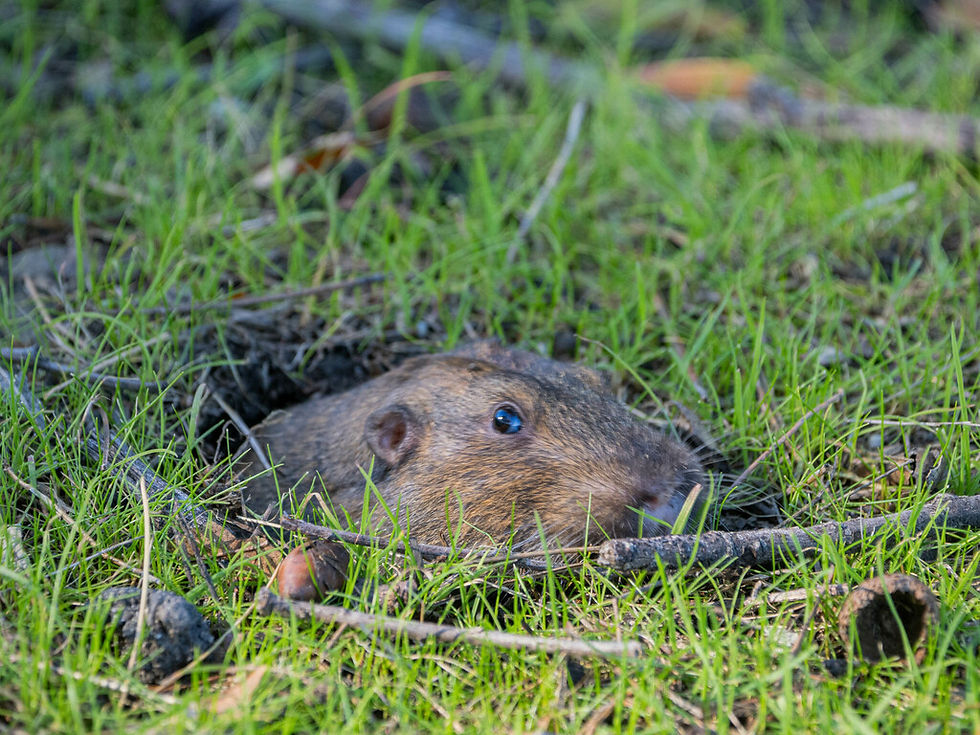These Wasps Sure Have Some Gall
- Emily Chang
- Oct 21
- 3 min read
While walking into Shady Oaks Park in San Jose, full of native oak trees, a closer inspection could lead one to discover a strange, miniature community of deformities within the leaves and branches. It may appear that a tree has been adorned with small red bulbs of Christmas lights or miniature pink flowers. Their unsuspectingly cute and dainty appearances often lead people to be shocked when they are told that there are parasitic larvae inside! During the Shady Oaks Park BioBlitz, participants had the opportunity to identify and learn about new galls they had never seen before, all in honor of California Biodiversity Day and Gall Week!

Figure 1. Red Coned Gall Wasps (Feron kingi) on Oak Tree
Galls are mutations in plants that are created by the presence of parasitic wasp larvae (or other types of insect larvae). This allows the wasp larvae to live in a safe shelter of oak deformity.

While most wasp larvae depend on a carnivorous diet usually provided by their mother, the gall wasp larvae sustain themselves through the nutrition of their tree home. Showcased in fig. 2 is the spined turbaned gall wasp (Antron douglasi), which hosts larvae in each of its points. Unfortunately, the gall wasps, depending on this dead oak leaf, will not make it.
These galls often present as symmetrical protrusions in the plants’ leaves or branches as in fig. 1. So when galls fail to form symmetrically, that is how one can tell that the larvae’s development may have been compromised. One reason for this may be an intruder, such as another parasitic wasp laying their eggs in the gall, thus killing the host. Some may be disturbed by the invasion of inquiline wasp larvae. Inquilines are different from parasites in that they do not kill their hosts, so luckily for the gall wasp larvae, they are just joined by unexpected roommates.


Figure 4. Club Gall Wasp (Xanthoteras clavuloides)
The conspicuous nature and unique physical traits of some of these galls make some of them easy to identify. However, some may go unnoticed, as the colors aren’t as bold and the shapes are not as inorganic. For example, pictured above (fig. 3., fig. 4.) are some tiny leaf galls that take on similar colors to their host leaf and would be very easy to miss.

Figure 5. Inconspicuous Stem Gall
Let’s also take a look at this stem gall, for example, in Figure 5. Its simple rotund shape and color the same as the stem, make it so that it is difficult to identify the type of gall wasp occupying it just by looking at it, since it is so plain and lacking identifiers that differentiate it from other stem galls that host different species of wasps.
Despite the diversity in species, shapes, and colors of wasps and their associated galls, there are so many other ways to learn more. iNaturalist contains a compendium of galls and their host plants, such as the coast live oak previously mentioned. Additionally, the recently started Gall Week has an umbrella project where galls from all over the world have been documented over September 6-14, 2025. And, so many other gall wasp species have yet to be discovered and officially named. Through iNaturalist users’ efforts to document as many galls as possible, new ones have been discovered and officially named using iNaturalist data. Join us for our next BioBlitz and you could help discover a new species!








Comments